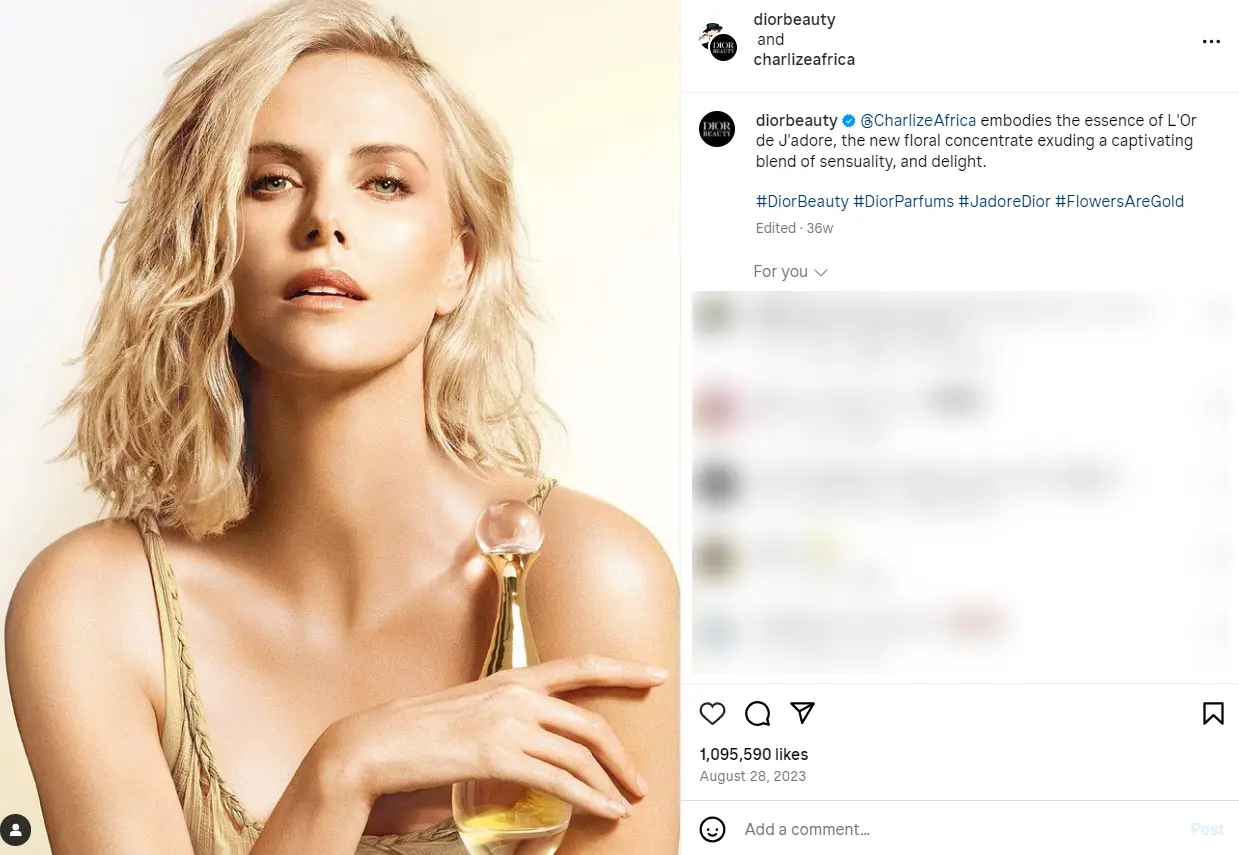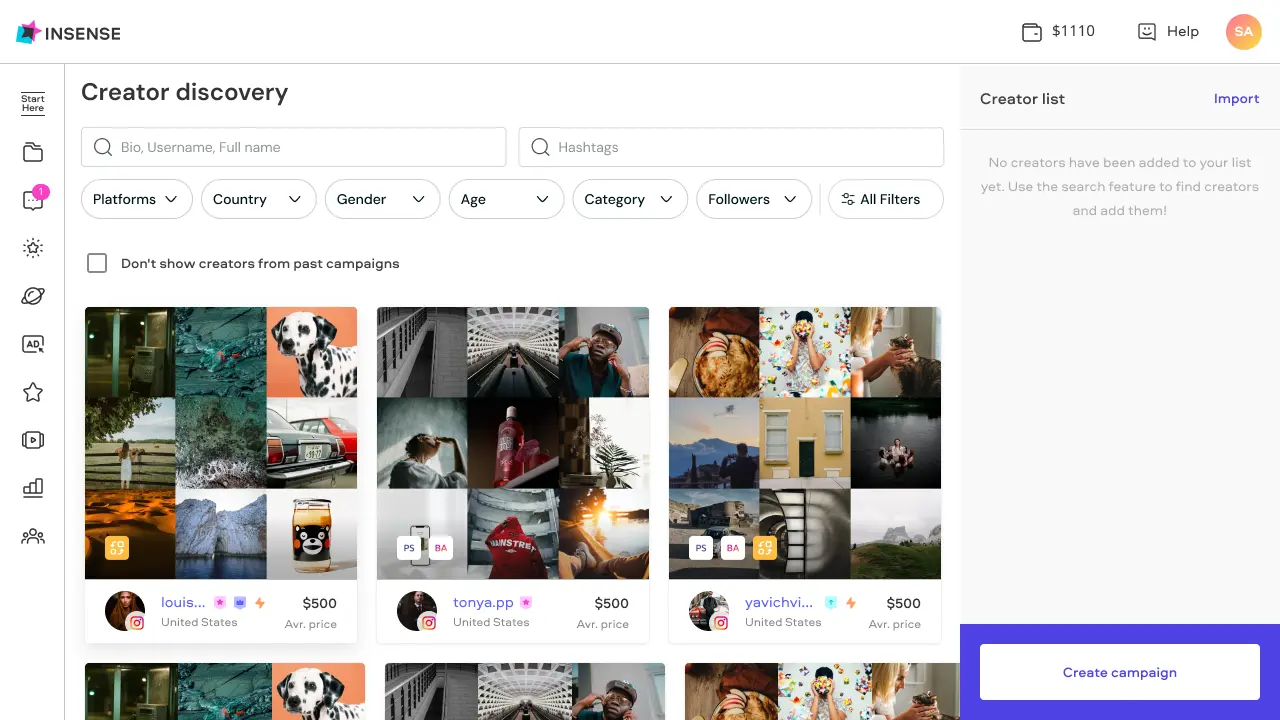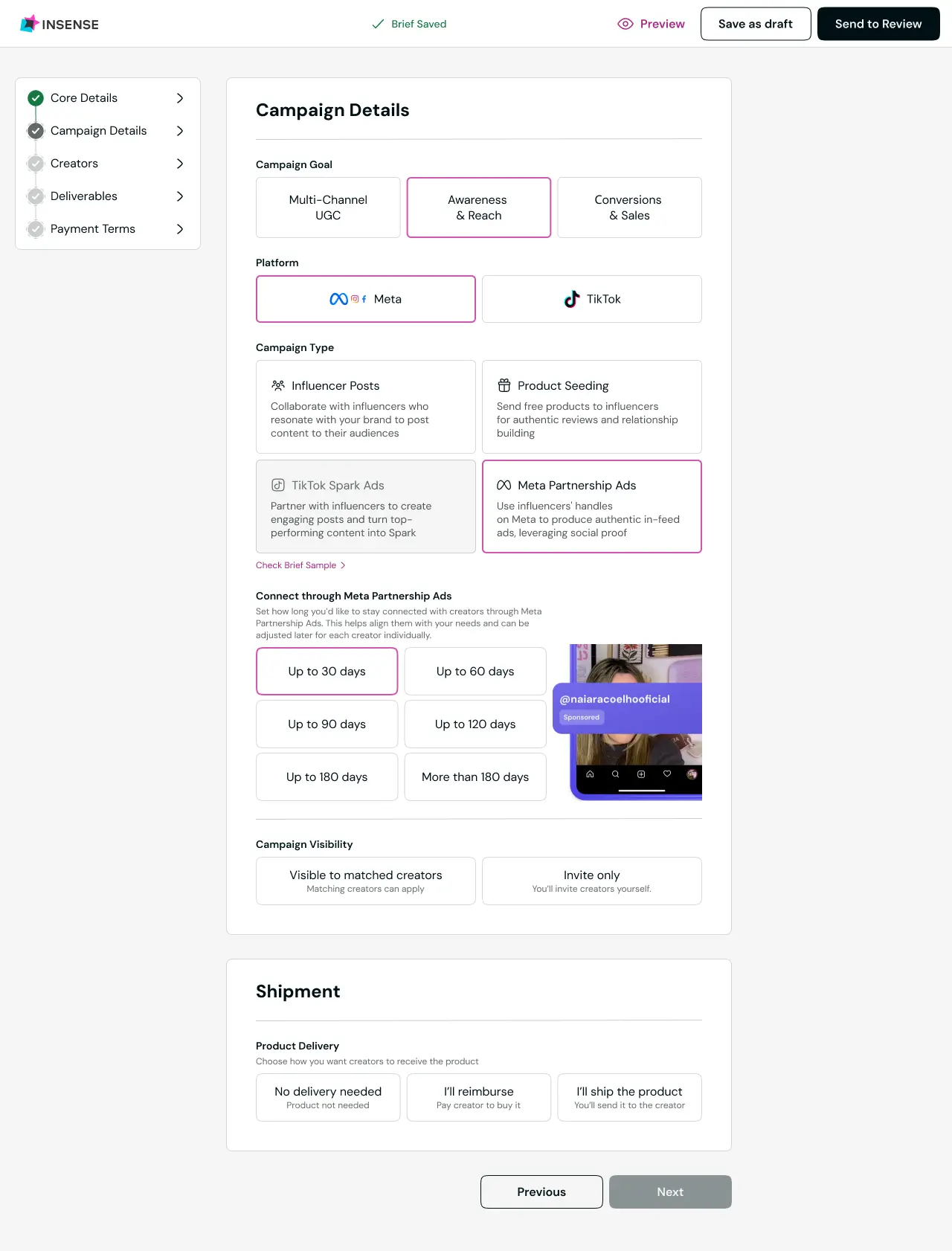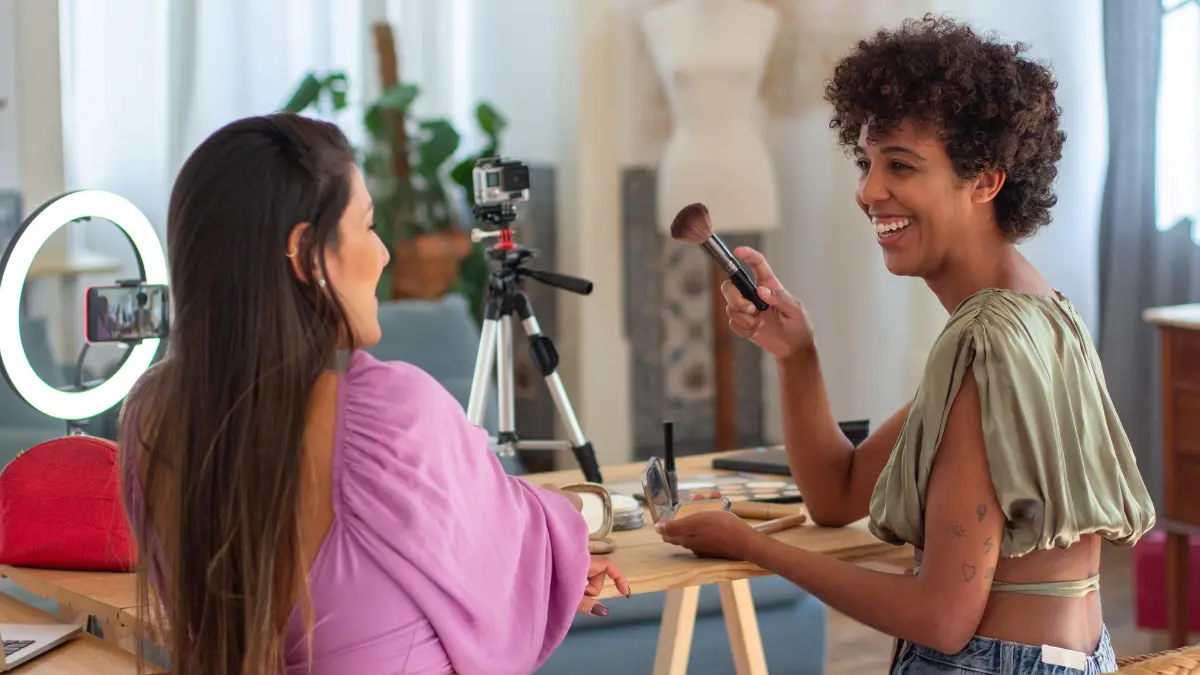Are you struggling to increase brand awareness and engage your audience?
No worries; we have a good solution lined up for you. 😉
Let us introduce you to ambassador marketing, where your own loyal customers can become top brand advocates and product promoters.
Sounds pretty good, right?
Still, to help you decide if this is the right marketing strategy for your brand, we’ll give you some insights into:
- What brand ambassadors are and what they do;
- Why you should partner up with them;
- How to find them.
Let’s begin.
What Are Brand Ambassadors?
Brand ambassadors publicly represent your brand and advocate for your products.
Just think about all those big brands that pay celebrities to represent them. The actress Charlize Theron who has been the face of Dior since 2004, is a perfect example.

The good news is that you can use ambassador marketing even if you don’t have a big budget like Dior.
You can either agree on a fixed salary with ambassadors or offer them incentives, like free products, discounts, or exclusive access to new products or brand events.
After all, a brand ambassador is a person who genuinely loves your brand and products and wants to promote them.
There are different types of brand ambassadors you can choose from:
- Employee brand ambassadors (a member of your staff);
- Customer brand ambassadors (one of your existing customers);
- Influencer brand ambassadors (a blogger or social media influencer in your niche);
- Industry expert brand ambassadors;
- Celebrity brand ambassadors.
If you rely on employees to represent your brand, a well-structured employee rewards program can motivate them to advocate more actively and consistently.
Now, let’s see what a brand ambassador does.
What Do Brand Ambassadors Do?
A brand ambassador’s main role is to represent your brand and promote your products in a positive light, both in person and online.
However, their job responsibilities can slightly differ depending on your brand’s marketing strategy and needs.
Here are some of the tasks brand ambassadors can fulfill:
- They use word-of-mouth marketing to advocate for your brand and products.
In case you don’t know, word-of-mouth marketing is a form of free advertising where a consumer likes a product so much that they tell everyone about it.
That’s usually how people start before even becoming ambassadors.
- As a brand representative, they attend in-person and online events, like trade shows, in-store product lunches, or webinars.
In this case, they present your brand values and offerings while also sharing valuable information about them.
- Create user-generated content to promote your brand and products on various channels.
These channels can include everything from social media platforms and personal blogs to websites and podcasts.
As for the user-generated content, ambassadors can unleash their creativity to come up with unique product testimonials, tutorials, and other visuals.
- Engage with the audience by answering questions about your brand and products and offering recommendations online and offline.
Brand ambassadors can engage with your customers, prospects, followers, and their social media followers.
- Offer valuable feedback on what the audience thinks about your brand and products based on their firsthand experience.
You can improve your marketing campaigns and the customer experience using this feedback.
We’ll talk more about how these things can benefit your brand; but for now, we need to make an important distinction between brand ambassadors and affiliates.
How do Brand Ambassadors Differ From Brand Affiliates?
While brand ambassadors and affiliates use word-of-mouth referrals to promote your brand and products, they are very different.
Check out this graphic to get the gist:

Now, let’s look at each of these in detail:
- Role: Ambassadors are brand advocates who aim to increase awareness and make the audience trust you.
Affiliates want to attract new consumers and convert them into paying customers to earn a commission.
- Compensation: Affiliates only accept monetary compensation as a percentage of each sale.
Ambassadors can receive incentives through discounts, free products, exclusive access to new products, or a fixed salary per month or project.
- Motivation: Ambassadors are driven by their genuine affinity for your brand and the desire to help it thrive.
Affiliates are in it for monetary compensation.
- Mediums: While affiliates promote your brand and products only online, ambassadors also do it offline by attending in-person events.
- Brand/product connection: Ambassadors are truly passionate about your brand and use your products.
Affiliates don’t have to like or use your products. Although, in some cases, they do.
Bonus: If you’re curious, read our in-depth comparison of affiliates vs. ambassadors.
With all the definitions out, it’s time to discover what makes a great brand ambassador.
What Makes a Great Brand Ambassador?
You need to find a person with specific qualities for a successful brand ambassador program.

We’ll explain them one by one to avoid any confusion:
- Authenticity. Since brand ambassadors love your products, their enthusiasm becomes visible in the content they create and their discourse.
Likewise, they usually share their personal experiences with your brand, which makes them look trustworthy in the eyes of the audience.
- Relevance. A brand advocate should match your audience's demographics and interests so that people can resonate with them.
For instance, if your goal is to sell beauty products to Gen Z consumers, you should look for a beauty influencer on TikTok whose followers match your target age group.
- Engagement. Your brand representative should engage with the audience online and offline to build a community.
They should stay on top of comments and direct messages on their social media account and respond quickly.
Likewise, they can have meaningful conversations with potential customers during in-person events.
- Great social media skills. According to a 2024 global report, 62.3% of the world’s population uses social media, which means you can’t do without it.
Thus, your brand ambassadors need to know how to use and make the most out of different social media platforms and how to create UGC tailored to each platform expertly.
- Creativity. A successful brand ambassador creates unique content that piques the audience’s interest and engages them.
Whether they use social media posts, case studies, live streams, videos, or any other media, their goal is to showcase your brand in a new light.
- Influence. If your goal is to reach new consumers and boost brand awareness, you should pick a brand ambassador with a large social media following, a.k.a. a macro-influencer.
However, you might want to look for a micro-influencer to boost engagement rates and conversions.
According to the State of Influencer Marketing 2023: Benchmark Report, micro-influencers have reported a TikTok engagement rate of 15.04%, while macro-influencers reported only 10.53%.
Either way, social media influencers hold immense potential to shape consumer behavior due to their authenticity, entertaining content, and the emotional bond that users form with them.
- Brand alignment. Ambassadors are the embodiment of your brand, which means they have to align with and live by the same values you promote.
Otherwise, they can hurt your brand’s reputation.
For example, if you strongly support environmental sustainability, you need an ambassador who generally promotes eco-friendly products and practices.
- Responsiveness. For your brand ambassador program to succeed, you need to collaborate well with the person you’re working with.
They should be eager to come up with ideas and give feedback on your marketing campaigns while also accepting your constructive feedback and improving accordingly.
- Results-oriented. Good brand ambassadors take their role seriously and make every effort to meet your marketing goals.
Thus, they will track and monitor their own performance to identify their strengths and weaknesses and improve.
And if they don’t have the means to do this, they’ll do their best to improve based on your feedback.
- Long-term commitment. Brand ambassadors are in it for the long haul and are dedicated to helping your business thrive.
According to this article by Socialit, it’s precisely this long-term commitment that shows the audience they can trust your brand and it ends up building customer loyalty.
While we’ve already mentioned a few of the benefits of working with brand ambassadors in passing, you should know exactly what you can get out of it.
Keep reading and find out.
What Are The Benefits of Working with a Brand Ambassador?
Here’s a quick look at some of the main benefits of brand ambassadorship.
Build trust and credibility
By sharing their own experiences with your brand and products, brand ambassadors create authentic content that resonates with the audience.
On top of that, by working with an influencer brand ambassador, you can build even more trust and credibility.
Why?
According to a 2023 Statista report, 36% of millennials worldwide consider influencer recommendations more trustworthy than regular ads.
Gain faster access to your target audience
If you partner with a social media influencer, that person will already have many followers who share their interests.
For example, a makeup influencer perfectly fits a brand selling eyeshadow or lipstick.
Likewise, if those followers match your brand’s target demographics, you’ve found the perfect shortcut to a new customer pool.
Create a community around your brand
By constantly communicating with the audience and answering their queries, brand ambassadors can help build a community of users who share the same affinity for your brand.
Then, those users can start using word-of-mouth marketing themselves, ultimately creating a community of brand ambassadors.
That’s amazing, right?
Save money and increase your marketing ROI
Brand ambassador programs can be cost-effective if you don’t hire a celebrity upfront.
Since ambassadors are not motivated by monetary compensation, they often agree to work for discounts, free products, and other brand perks.
On the other hand, if you want to partner up with a social media influencer and pay them in cash, you should know that micro-influencer pricing is more affordable than macro-influencer pricing.
On top of that, a 2023 Statista survey showed that two out of every ten consumers purchased products endorsed by influencers, which means you can easily boost your marketing ROI.
With so many great benefits, we imagine you already want a piece of this pie.
But first, let us show you how to find brand ambassadors for your brand.
How To Find a Brand Ambassador?
Check out some tried and tested strategies for finding brand ambassadors:
- Define your ideal brand ambassador. Start by setting clear marketing campaign goals, as this will help you decide on the type of brand ambassador you need.
For instance, if your goal is to boost brand awareness, you should work with an influencer brand ambassador rather than an employee with a small following.
Then, go through the 10 main qualities of a brand ambassador and choose the ones that can help you reach your goals and prioritize them in your search.
- Use an influencer marketing tool. The easiest way to find influencer brand ambassadors is to use an influencer marketing tool, like our very own Insense.
You can use Insense to find influencers in one of two ways:
- You access the Creator Marketplace, which includes a database of over 20K TikTok and Instagram influencers and UGC creators.
Then, you use the advanced search filters to narrow your search by industry, influencer and audience demographics, price, and more.
And just like magic, you immediately get access to a list of potential brand ambassadors.

- You can use the Creative Brief to give some basic information about your brand ambassador program and the type of influencer you’re looking for.
Then, you let Insense take care of the rest and match you with the influencers that best fit your requirements.

Moreover, once you find the right collaborators, you can use Insense to keep in touch with them and manage your campaigns efficiently.
- Consider local micro-influencers. A local micro-influencer is a user with a pretty large following in their specific region.
What sets them apart is that their content is very relatable and drives an emotional response from their local followers, and they generate more meaningful engagement.
For instance, if you want to find a local Instagram brand ambassador, you can include location and industry-specific hashtags (#chicagomakeupinfluencer) in Instagram’s search bar.
- Look at your employees as potential candidates. Since your employees know your brand and products inside and out, they can make great brand ambassadors.
However, you should first determine if they have the qualities of a great ambassador; otherwise, this won’t work.
Tip: Once you find ambassadors for your brand, build and nurture long-term relationships with them, which is the key to successful collaborations.
Next, we’ll show you how three big brands mastered the art of brand ambassador programs.
3 Examples of Effective Brand Ambassador Programs
If you’re still skeptical about the effectiveness of brand ambassador programs, look at these real-life successful examples.
1. Xbox
The Xbox Ambassador program promotes a healthy gaming community characterized by fun, safety, and inclusivity.

The main responsibility of Xbox ambassadors is to interact with other gamers through online chats and playdates and spark up conversations on social media about new Xbox games.
As a reward for completing special missions, the ambassadors gain points that they can redeem for digital game badges or contest entries where they can win exclusive access to unreleased games.
This is a good example of how you can use gamification to motivate your brand ambassadors.
2. Sephora
Sephora Squad is one of the beauty industry's most successful brand ambassador programs.

Every year, Sephora partners with beauty enthusiasts who align with the brand’s values to create and post user-generated content showcasing Sephora products on their social media accounts.
Sephora rewards its brand ambassadors with free products, access to exclusive brand events, and networking opportunities.
What we like most about Sephora’s program is that their ambassadors are as diverse as their customers in age, gender, body type, and more, which aligns perfectly with their brand image.
3. Red Bull
Red Bull Student Marketeer is the longest-running ambassador program to this day and has over 4K ambassadors.

The Red Bull ambassador program targets college students who genuinely love the brand and asks them to promote Red Bull on campus and on social media.
Red Bull ambassadors get paid an hourly wage, which comes in handy for college students, but they also get to attend brand events and interact with the brand’s sponsored athletes.
You could try a similar approach if your target audience matches the college student demographic.
***
There you have it, three amazing brand ambassador program examples.
Now, over to you.
Takeaway
With everything we’ve covered here, you can start planning your brand ambassador program immediately.
Start by setting your marketing goals and selecting the brand ambassador type to help you achieve them.
If you’re looking for an influencer brand ambassador, we can help you find the right match.
Book a demo with Insense, and we’ll explain how it works.










